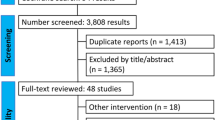Abstract.
The use of prosthetic mesh in abdominal wall hernia surgery is a well-accepted practice. What is not settled, however, is the type of prosthesis that best suits the purpose. The narrow choice today means a prosthesis of polyester or polypropylene. These are available in many designs, configuration of weave, thickness of weave and strand, and size of pore. There has been a pervasive feeling that these materials "shrink". To what extent they do has not been accurately defined. This study was designed to measure such "shrinkage". Interestingly, our measurements revealed that prosthetic meshes could "expand" as well as "shrink". The extent to which they do varies between –40% and 58.5%. Whereas it was felt that fibrocyte activity and its eventual scar formation accounted for the "shrinkage" of the mesh, we have discovered that structural alterations in the size of the mesh pores can be affected by distilled water, saline, blood, formalin, bleach, as well as in vivo implantation. Prosthetic meshes are, therefore, not the inert materials they are claimed to be and can expand as well as shrink. We have, unfortunately, not been able to correlate the degree or direction of change to any known parameter.
Similar content being viewed by others
Author information
Authors and Affiliations
Additional information
Electronic Publication
Rights and permissions
About this article
Cite this article
Coda, .A., Bendavid, .R., Botto-Micca, .F. et al. Structural alterations of prosthetic meshes in humans. Hernia 7, 29–34 (2003). https://doi.org/10.1007/s10029-002-0089-6
Received:
Accepted:
Issue Date:
DOI: https://doi.org/10.1007/s10029-002-0089-6




